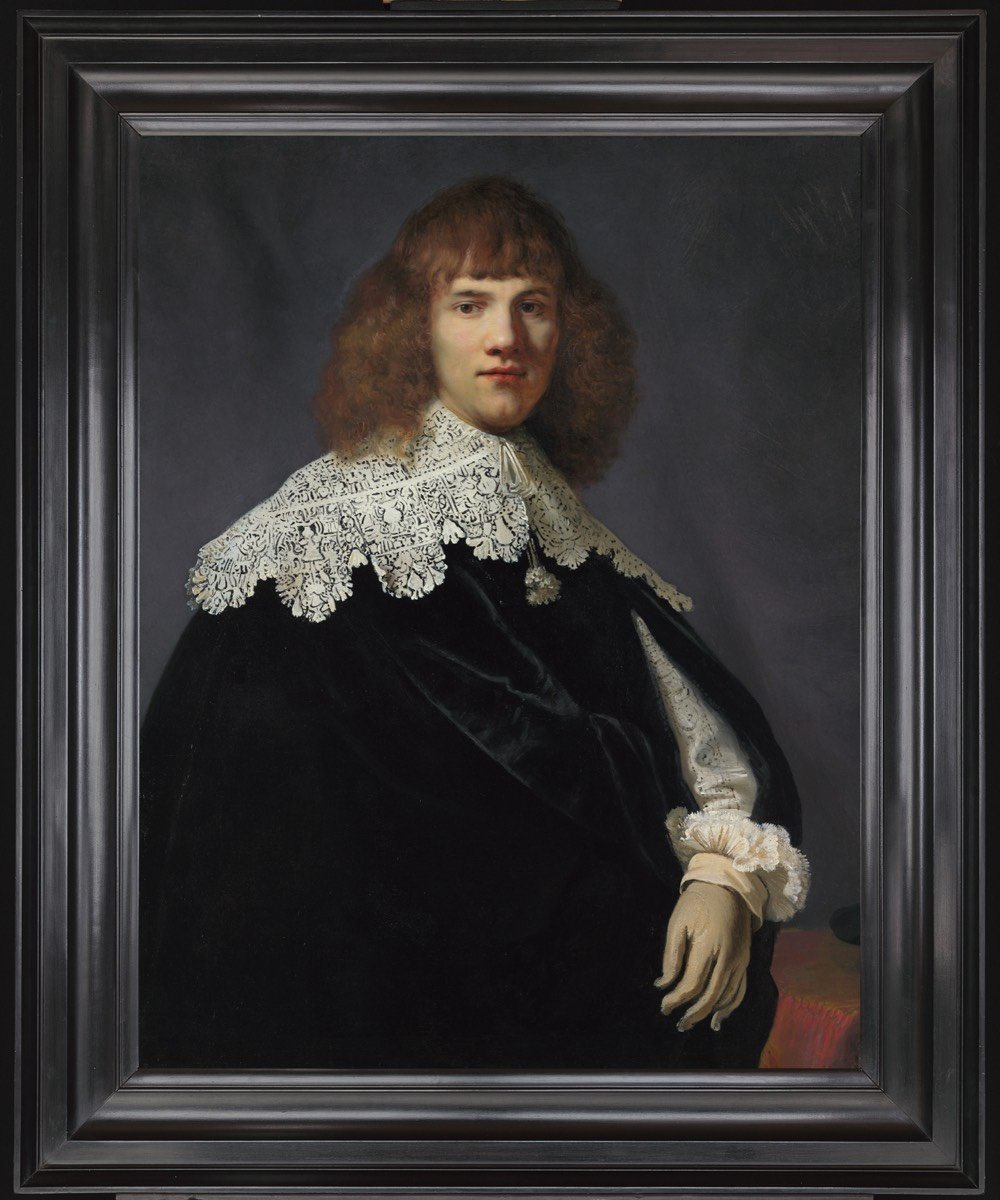Rembrandtness and the Art of Art Authentication
Russell Shorto has a piece in this weekend’s NY Times Magazine about two previously undiscovered Rembrandt paintings, the man who found them both, and the art-world controversy that followed. Here’s one of the newly claimed Rembrandts, bought for $173,000 at auction:

The article is interesting throughout — it’s a neat little bow of a story by the author of the fantastic Island at the Center of the World — but I wanted to highlight this bit on “Rembrandtness” (what a term!) and the fuzziness of authenticating a painting like this:
Six next lined up prominent scholars to support his attribution of the painting to Rembrandt. It’s worth noting that some were unwilling to do so — not because they definitively believed otherwise, but as part of a shift toward acknowledging the gray areas in art history. For such a painting, which seemingly came out of nowhere, there is no way to achieve absolute certainty about its provenance. “When Jan came to me with his painting, I had to admit I couldn’t contest his arguments,” said Gary Schwartz, an American Rembrandt biographer and an authority on 17th-century Dutch art. “And I told him I wouldn’t express doubts about Rembrandt’s authorship. But it doesn’t make me happy” to be so definitive. He went on to elaborate the particular difficulties that Rembrandt poses for authenticators: the variety of styles he painted in, his many pupils, the likelihood that in his studio more than one person worked on a given painting. A painting that is determined to be, say, by “the studio of Rembrandt,” rather than by Rembrandt himself, would be of lesser value. Schwartz is one of a number of art historians who, when it comes to questions of the authenticity of works by famous painters, would like people to focus less on the artist and the monetary worth of the painting than on the work itself. He uses the term “Rembrandtness” and argues for assigning shades of likelihood that a painting is by the artist himself. Regarding the Rembrandtness of this particular portrait, he said, “The attribution to Rembrandt is the hypothesis to beat, but it may not be unbeatable.”
Museums try to respect “Rembrandtness.” The National Gallery of Art in London, for instance, labels “An Old Man in an Armchair” as “probably by Rembrandt,” and the Mauritshuis museum recently announced that it is mounting an exhaustive study of two of its supposed Rembrandts to try to determine the likelihood of their being by the master. “I think ‘Rembrandtness’ is a smart idea,” said Ronni Baer, senior curator of European paintings at the Museum of Fine Arts in Boston. “But people aren’t going to be content with it because there’s so much money involved in attribution.”
I wonder what the true Rembrandtness is of all the paintings in museums or expensive collections that are currently attributed to only his hand? Or the da Vinciness of Salvator Mundi?
Speaking of Rembrandt, the Rijksmuseum in Amsterdam is currently displaying all of their extensive collection of works by the artist in an exhibition called All the Rembrandts.1
In addition, the most important painting in the collection, Night Watch, will be restored in place over the next several years so that museum visitors can observe the process.
To paraphrase the classic Onion article about razors: “Fuck everything, we’re doing all the Rembrandts!”↩





Stay Connected